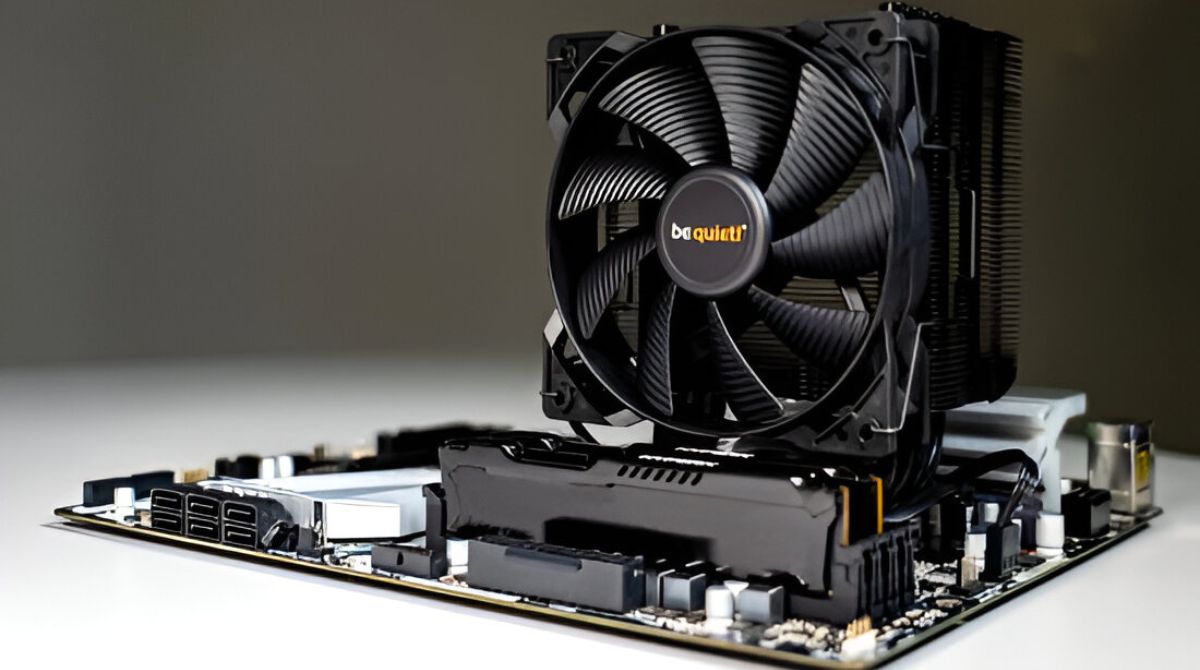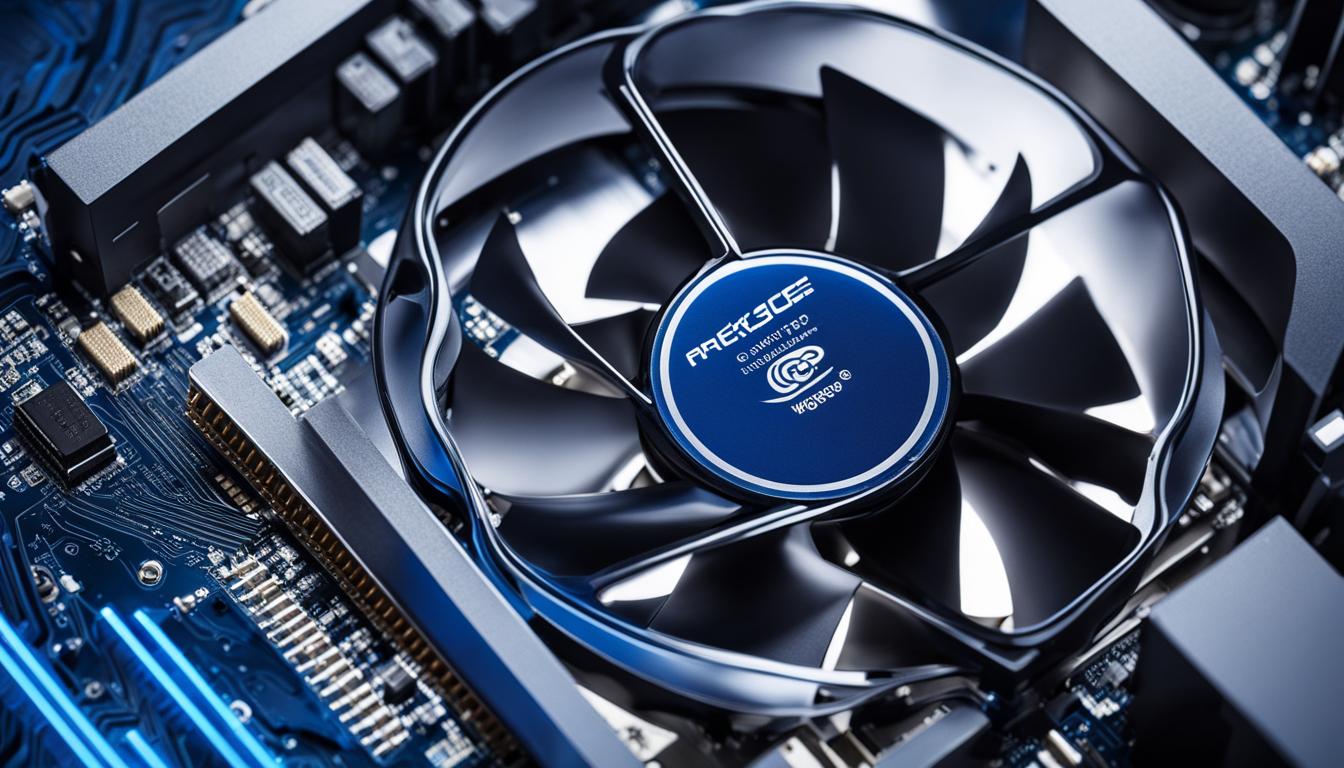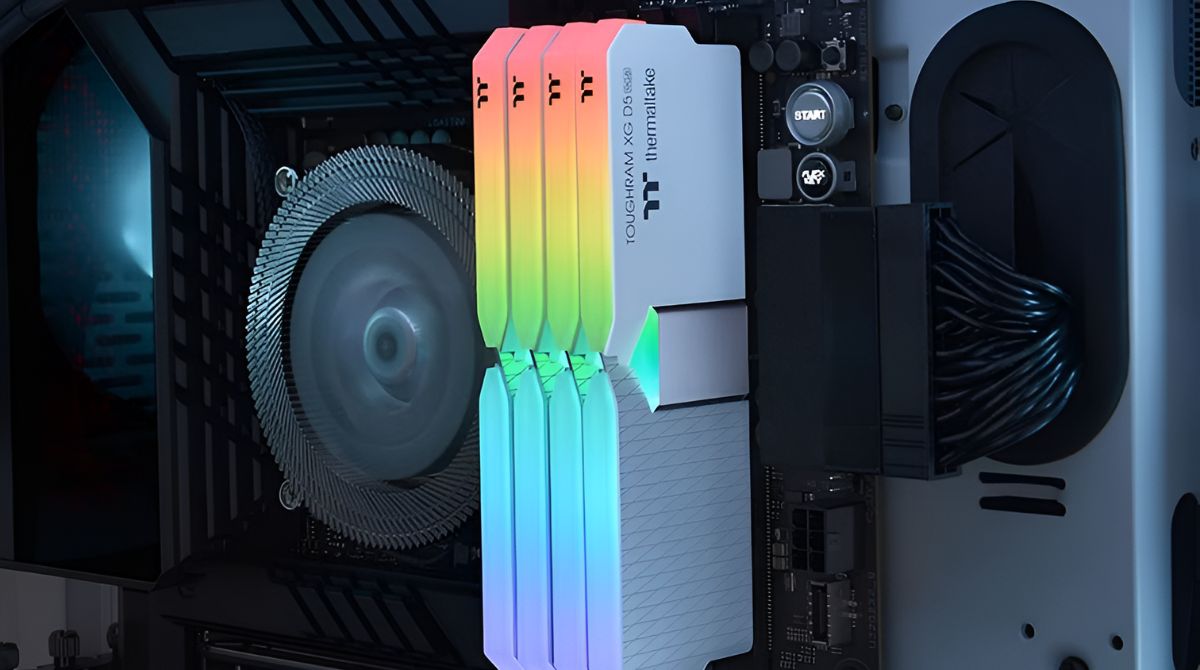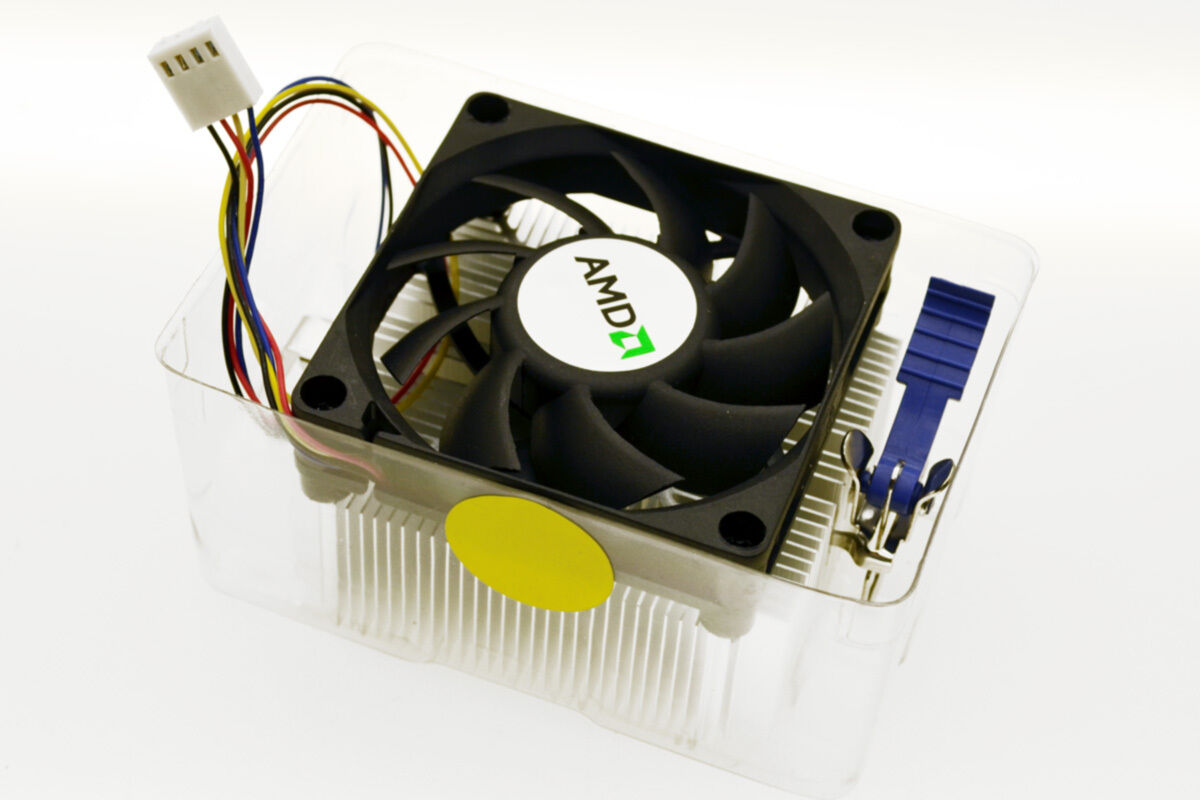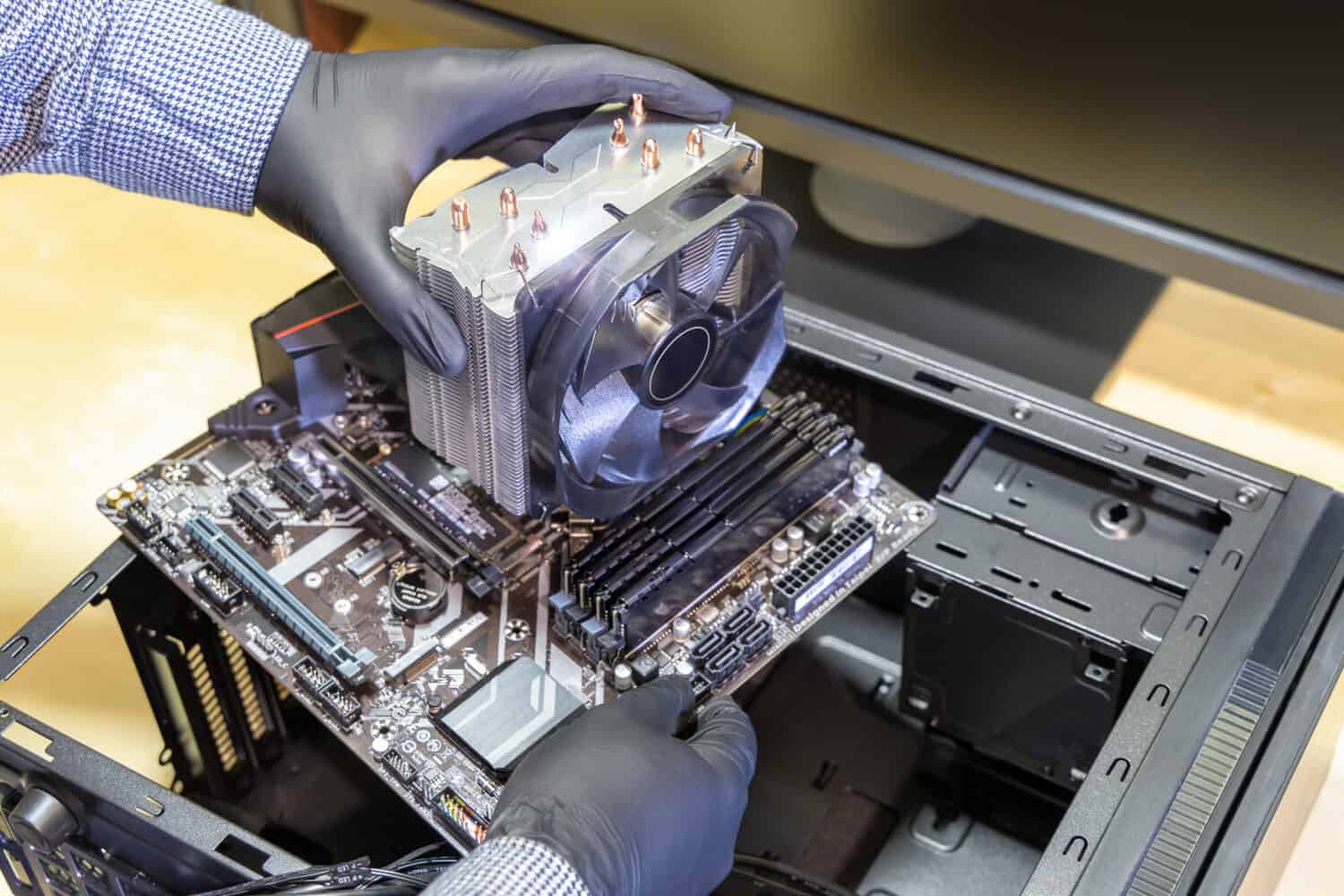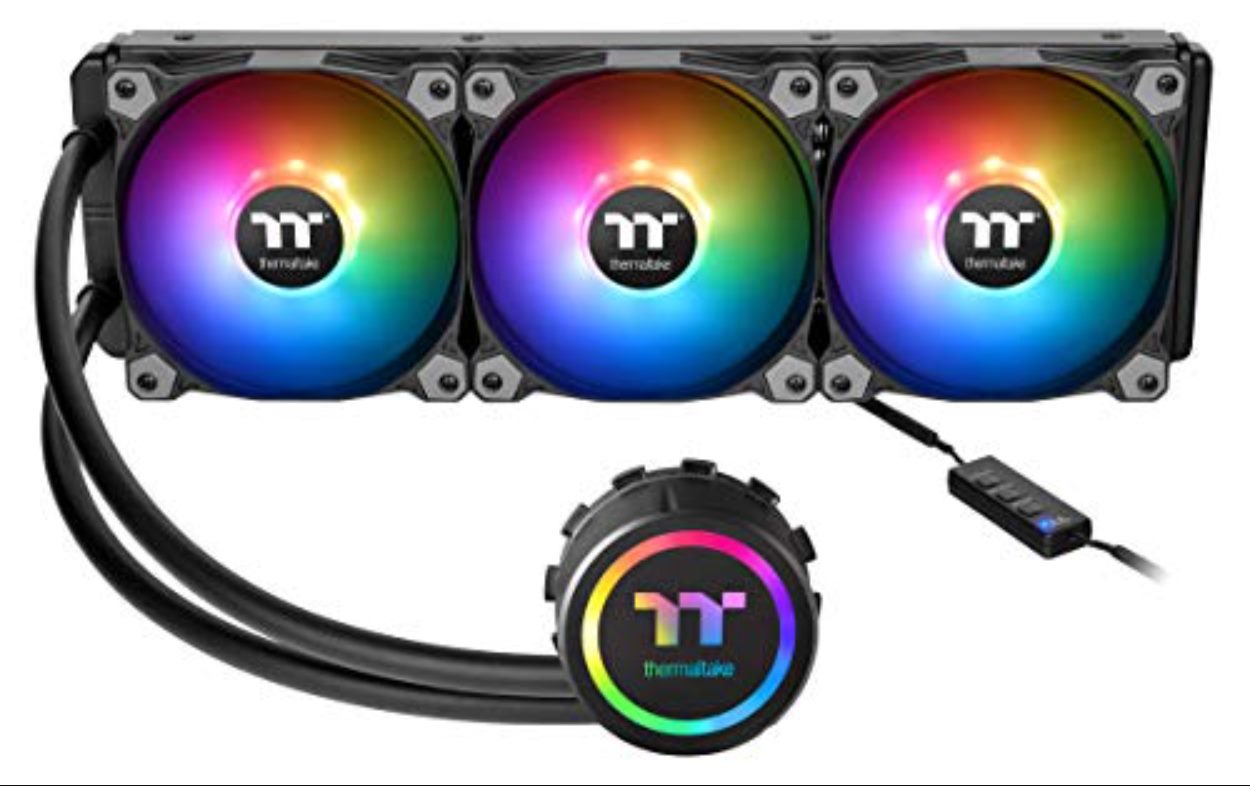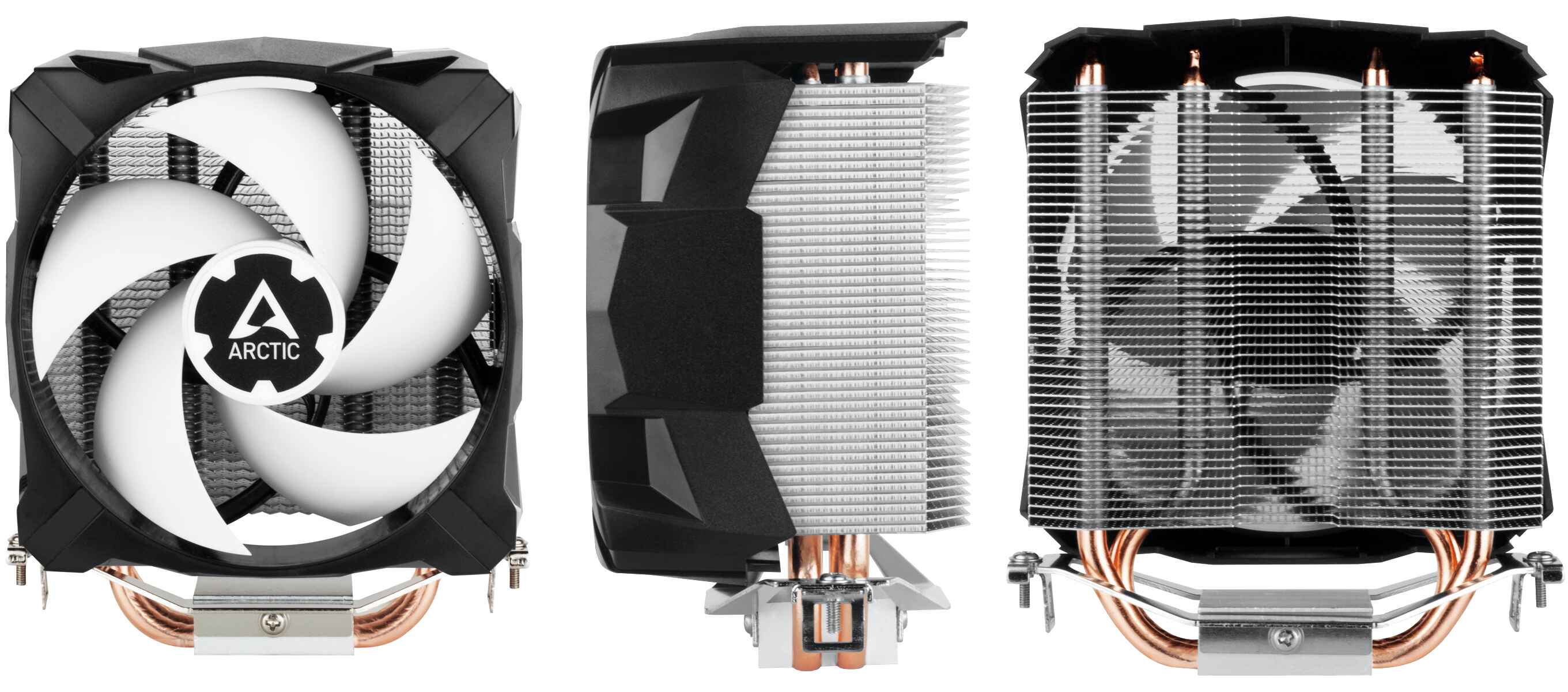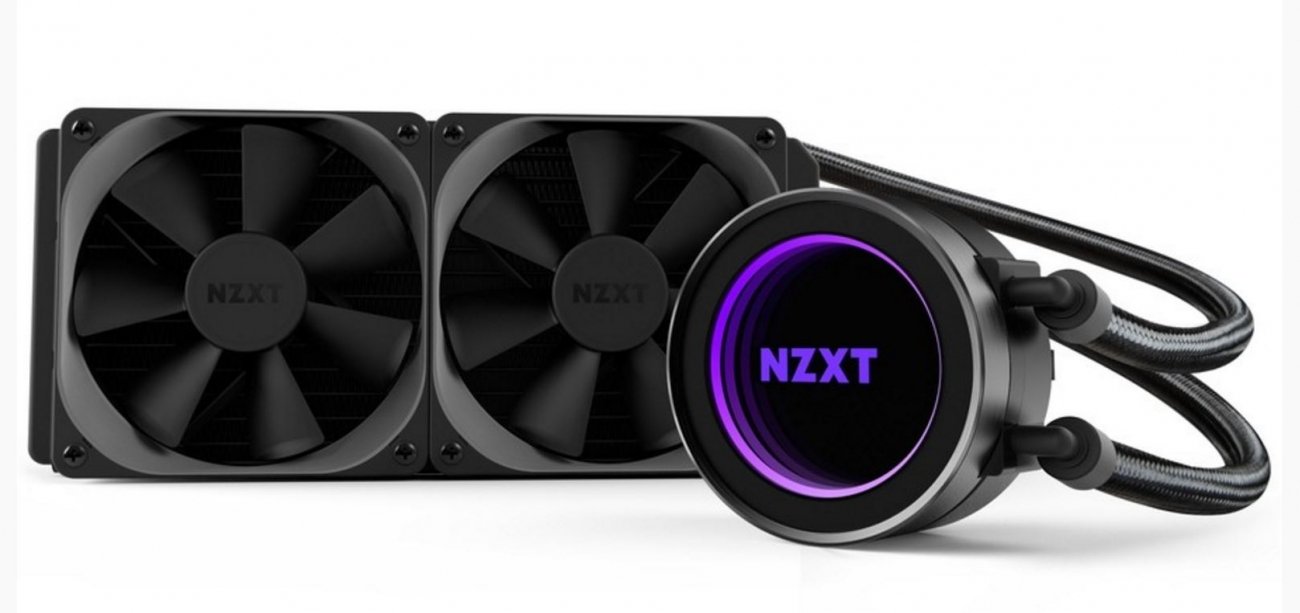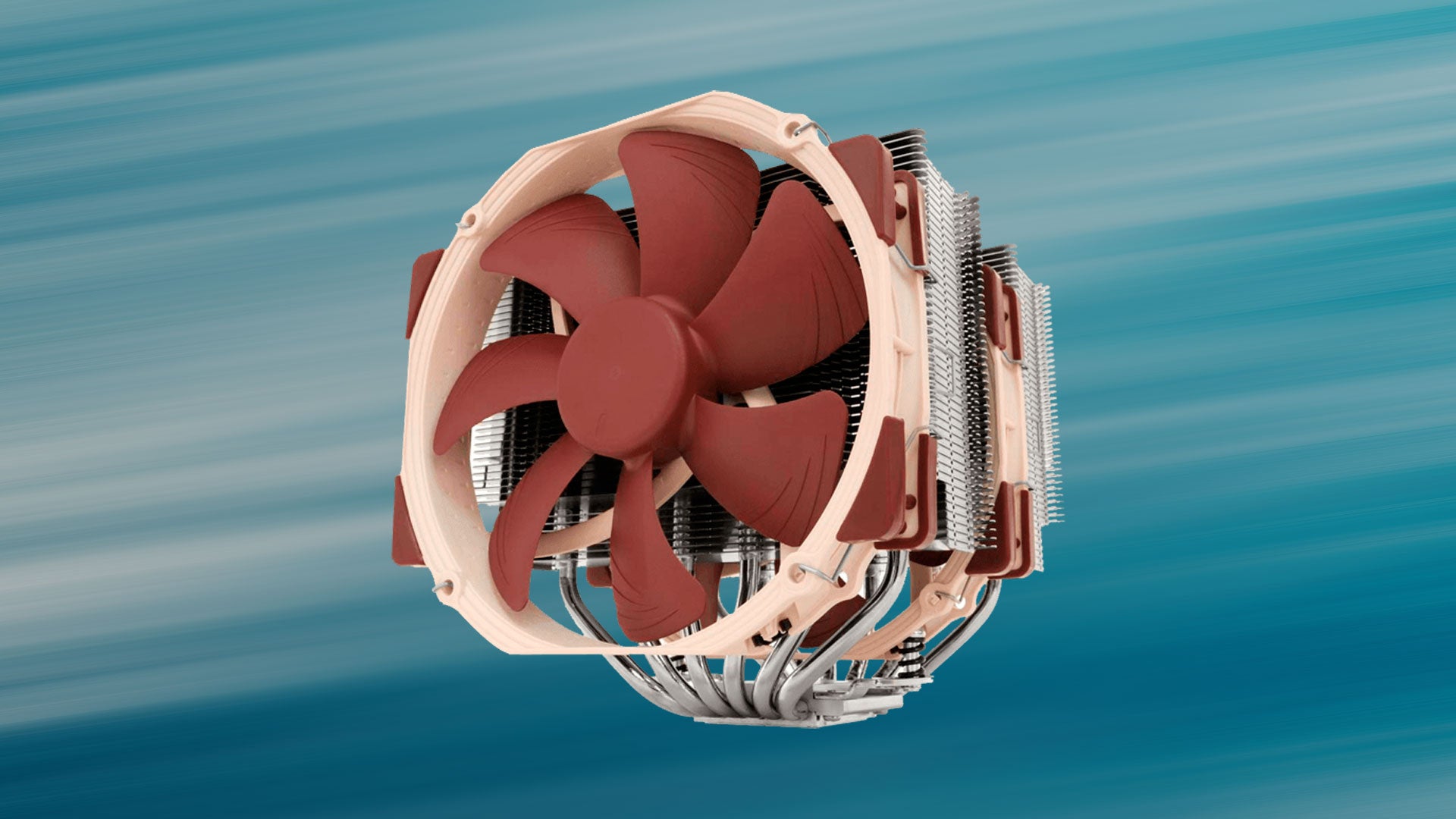Introduction
Choosing the right CPU cooler for your computer is essential for maintaining optimal performance and preventing overheating. However, one common concern that many users have is whether their chosen CPU cooler will fit inside their computer case. A poorly fitting cooler can lead to issues such as interference with other components, insufficient airflow, and even damage to the cooler or the case itself.
Fortunately, there are several factors you can consider to ensure compatibility between your CPU cooler and case. By taking these factors into account, you can make an informed decision and avoid any potential headaches down the line.
In this guide, we will explore the key factors that you should consider when determining if your CPU cooler will fit your case. From the height and clearance of the cooler to the width, length, and compatibility, we will provide you with the information you need to make a smart choice.
It is important to note that every CPU cooler and computer case is unique, so make sure to consult the manufacturer’s specifications for your specific models. Additionally, seeking advice from online forums and reading reviews can provide you with valuable insights and experiences from other users.
Let’s dive deeper into these factors and equip you with the knowledge needed to ensure a perfect fit between your CPU cooler and case.
Factors to Consider
When determining if your CPU cooler will fit your case, there are several important factors to keep in mind. By considering these factors, you can ensure a seamless fit and optimal performance for your computer system.
One of the key factors to consider is the height of the CPU cooler. Different coolers have varying heights, and it’s crucial to ensure that the cooler you choose fits within the vertical space allotted by your case. Check your case’s specifications to find the maximum cooler height supported.
Another factor to consider is the case clearance. This refers to the available space around the CPU socket on the motherboard and the space between the motherboard and the side panel of the case. A CPU cooler with a larger heatsink or fan may require more clearance to avoid any conflicts with nearby components or obstructed airflow.
The width of the CPU cooler is also an important consideration. Some coolers have wider heatsinks or fans, and it’s essential to ensure that they fit within the width of your case. Measure the available space in your case to make sure the cooler won’t cause any interference.
Similarly, the length of the CPU cooler is crucial. Longer coolers may come into contact with the memory modules or other components on the motherboard. Measuring the distance from the CPU socket to any potential obstructions will help determine if the cooler is compatible.
CPU cooler compatibility is another crucial factor. Different sockets and motherboard designs require specific CPU coolers to ensure proper installation and functionality. Check the compatibility of the cooler with your motherboard socket before making a purchase.
To determine whether your CPU cooler will fit your case, it’s recommended to consult the manufacturer’s specifications for both the cooler and case. These specifications will provide you with accurate measurements and compatibility details, giving you confidence in your purchase decision.
Additionally, seeking advice from online forums and reading reviews from users who have already tested the compatibility of specific coolers and cases can provide valuable insights and real-world experiences.
By considering factors such as height, clearance, width, length, and compatibility, as well as consulting manufacturer specifications and user experiences, you can ensure that your CPU cooler will fit your case perfectly. A seamless fit will not only enhance the performance and longevity of your computer system but also prevent any potential issues that may arise from an improperly fitted cooler.
CPU Cooler Height
One of the key factors to consider when determining if your CPU cooler will fit your case is the height of the cooler. CPU coolers come in various sizes, and it’s crucial to choose one that fits within the maximum allowable height specified by your case.
The height of a CPU cooler is measured from the base to the highest point of the heatsink or fan. This measurement is typically provided in millimeters (mm) by the manufacturer. It’s essential to compare this height with the maximum cooler height supported by your case.
When choosing a CPU cooler, you need to ensure that there is sufficient clearance between the top of the cooler and the side panel of your case. This clearance is important to allow for proper airflow and to avoid any interference with other components, such as memory modules or the power supply.
If the cooler is too tall for your case, it may not fit inside or may cause the side panel to bulge or not close properly. This not only affects the aesthetics but can also impact the overall cooling performance of your system.
To determine the maximum allowable cooler height for your case, check the specifications provided by the case manufacturer. These specifications will typically include information on the maximum CPU cooler height supported.
It’s important to note that some cases, particularly smaller form factors like Mini-ITX or slim cases, have height limitations that are lower than standard ATX or mid-tower cases. Therefore, if you have a smaller case, it’s crucial to pay extra attention to the CPU cooler height to ensure compatibility.
By considering the height of your CPU cooler and comparing it with the maximum supported height of your case, you can ensure a proper fit and prevent any potential issues related to size compatibility.
Case Clearance
Another important factor to consider when determining if your CPU cooler will fit your case is the clearance within the case itself. Case clearance refers to the available space around the CPU socket on the motherboard and the space between the motherboard and the side panel of the case.
When installing a CPU cooler, it’s crucial to ensure that there is adequate clearance to avoid any conflicts with nearby components and to promote proper airflow within the case.
If the CPU cooler is too close to other components, such as memory modules or VRM heatsinks, it may interfere with their operation or prevent them from being installed correctly. This can lead to improper functioning or even damage to the components.
In addition, insufficient clearance between the CPU cooler and the side panel of the case can restrict airflow, leading to higher CPU temperatures and reduced overall system performance.
To determine the case clearance for your CPU cooler, it’s recommended to consult the specifications provided by the case manufacturer. These specifications will typically include information on the maximum CPU cooler clearance supported by the case.
When considering the case clearance, it’s essential to account for both the width and height of the CPU cooler. Some coolers may have wider heatsinks or fans that require more space around the CPU socket.
Additionally, if you plan to use additional case fans or liquid cooling radiators, make sure there is enough clearance to accommodate these components alongside the CPU cooler without any conflicts.
By ensuring adequate case clearance, you can prevent any potential interference or restricted airflow, allowing for optimal performance and proper cooling of your CPU and other components.
Cooler Width
When determining if your CPU cooler will fit your case, one important factor to consider is the width of the cooler. The width of a CPU cooler refers to the size of the heatsink or fan assembly and can have implications for the compatibility with your case.
It’s crucial to ensure that the width of your chosen CPU cooler does not exceed the available space within your case. A cooler that is too wide may encounter clearance issues with other components, such as memory modules or the side panel of the case.
Before purchasing a CPU cooler, measure the internal width of your case to determine the available space. It’s important to note that different cases have varying widths, especially in smaller form factors like Mini-ITX or slim cases where space might be more limited.
When considering the cooler width, take into account any potential obstacles near the CPU socket, such as capacitors or motherboard heatsinks. Ensure that the cooler can be installed without interfering or coming into contact with these components.
Additionally, if you plan to install multiple PCI-e cards or other expansion cards, make sure that the width of the CPU cooler doesn’t obstruct the slots or prevent the cards from being inserted properly.
Consulting the specifications provided by the case manufacturer can provide valuable information on the maximum CPU cooler width supported by the case. These specifications will help you determine if your chosen cooler will fit within the available space.
By considering the width of the CPU cooler and comparing it with the available space within your case, you can ensure compatibility and eliminate any potential clearance issues that could hinder the installation or performance of your system.
Cooler Length
When considering if your CPU cooler will fit your case, it’s important to take into account the length of the cooler. The length of a CPU cooler refers to the dimension from the front of the cooler to the back, including any protruding components or fans.
It’s crucial to ensure that the length of your chosen CPU cooler does not exceed the available space within your case. An excessively long cooler may encounter clearance issues with other components on the motherboard or obstruction with the side panel of the case.
Before purchasing a CPU cooler, measure the internal length of your case to determine the available space. Pay attention to any potential obstacles near the CPU socket, such as RAM slots, power connectors, or motherboard heatsinks. Ensure that the cooler can be installed without interfering or coming into contact with these components.
Furthermore, if your case supports front-mounted fans or radiators, make sure that the length of the CPU cooler does not obstruct the installation or compromise the airflow of these components.
It’s also important to note that some CPU coolers have adjustable fan heights or modular designs, which allows for flexibility in terms of length. These coolers can be adjusted to accommodate different case lengths and component configurations.
Consulting the specifications provided by the case manufacturer can provide valuable information on the maximum CPU cooler length supported by the case. These specifications will help you determine if your chosen cooler will fit within the available space and avoid any potential conflicts.
By considering the length of the CPU cooler and comparing it with the available space within your case, you can ensure compatibility and eliminate any potential clearance issues that could hinder the installation or performance of your system.
Cooler Compatibility
When selecting a CPU cooler, it’s crucial to consider its compatibility with your motherboard socket. Different CPU cooler manufacturers design their products to be compatible with specific CPU socket types, such as Intel LGA or AMD AM4.
Choose a CPU cooler that is specifically designed for your motherboard socket to ensure proper installation and functionality. Installing a cooler that is not compatible with your motherboard socket can result in a non-functional cooling solution or potential damage to your CPU or motherboard.
Check the specifications of both your CPU cooler and motherboard to determine their compatibility. CPU cooler manufacturers often provide a list of supported sockets for each specific model, making it easier for you to choose the right cooler for your motherboard.
Additionally, consider the CPU cooler’s TDP (Thermal Design Power) rating. The TDP rating indicates the maximum amount of heat that the cooler can dissipate. It’s important to ensure that the TDP of the CPU cooler is sufficient for the thermal demands of your CPU. Consult the CPU manufacturer’s specifications or your motherboard manual for the CPU’s TDP rating.
Furthermore, consider the overall dimensions of the CPU cooler in relation to your motherboard and case. Some larger coolers may hang over or obstruct nearby components, such as memory slots or PCI-e slots. Verify that the chosen cooler is compatible with your specific motherboard layout and any expansion cards you plan to install.
Finally, consider any specific requirements or recommendations from your CPU manufacturer. Some CPUs, especially high-performance models, may require specific types of coolers or have recommendations for cooling solutions. Check the CPU manufacturer’s website or documentation for any guidance regarding compatible coolers.
By ensuring that your CPU cooler is compatible with your motherboard socket, fits within the dimensions of your motherboard and case, and meets the thermal demands of your CPU, you can ensure a compatible and efficient cooling solution for your system.
Checking Manufacturer’s Specifications
When determining if your CPU cooler will fit your case, one of the most reliable sources of information is the specifications provided by the manufacturer. Both the CPU cooler manufacturer and the case manufacturer offer valuable data that can help you ensure compatibility between the two components.
Start by visiting the websites of the CPU cooler manufacturer and the case manufacturer. Look for detailed specifications and compatibility charts for their respective products. These specifications usually include important information such as cooler height, width, length, and supported motherboard sockets.
Pay close attention to the maximum cooler dimensions specified by the case manufacturer. Make sure that the dimensions of your chosen CPU cooler, including the heatsink or fan assembly, fall within these limits. Additionally, check for any specific compatibility notes or recommendations provided by the manufacturer.
For example, some case manufacturers may provide a maximum cooler height specification or mention any potential clearance issues with certain components in their case compatibility information. Make sure to thoroughly read through these details to ensure a proper fit and avoid any potential problems.
Similarly, the CPU cooler manufacturer’s specifications will provide you with details on the cooler’s dimensions, supported socket types, and any specific compatibility recommendations. This information will enable you to choose a CPU cooler that is not only physically compatible with your case but also optimized for your CPU’s cooling needs.
In addition to the manufacturer’s websites, you can also find useful information on online retailer websites. Many reputable retailers provide detailed product descriptions that include dimensions, compatibility information, and even customer reviews that can give you insights into the compatibility of specific CPU coolers with various cases.
By checking the manufacturer’s specifications, you can gather accurate and reliable information regarding the compatibility of your CPU cooler with your case. This will help you make an informed decision and ensure a seamless fit for optimal performance and cooling efficiency.
Online Forums and Reviews
In addition to checking the manufacturer’s specifications, another valuable resource for determining if your CPU cooler will fit your case is online forums and reviews. These platforms provide a wealth of information and real-world experiences from other users who have already tested the compatibility of various CPU coolers and cases.
Online forums dedicated to computer hardware and building enthusiasts are great places to seek advice and answers to specific questions regarding CPU cooler and case compatibility. You can find communities of experienced users and experts who are willing to share their knowledge and experiences.
Search for threads or discussions that focus on CPU cooler and case compatibility. Post your own questions if you have specific concerns or requirements. The insights and recommendations from other forum members can provide valuable guidance and help you make an informed decision.
Reviews and testimonials from other users are another excellent source of information. Look for reviews of the specific CPU cooler and case that you are considering. Pay attention to any comments or feedback related to compatibility and installation experiences.
Many review websites and online retailers allow users to leave detailed reviews and ratings for products they have purchased. Read through these reviews to get an idea of how well the CPU cooler you are considering fits inside different cases. Pay attention to any potential issues or compatibility concerns highlighted by the reviewers.
It’s essential to consider a wide range of opinions and experiences when relying on online forums and reviews. Keep in mind that individual configurations and installation methods can vary, so it’s important to weigh the feedback against other sources of information.
By leveraging the collective knowledge and experiences of the online community, you can gain valuable insights into the compatibility of different CPU coolers with various cases. This information will help you make a well-informed decision and ensure a successful and hassle-free installation.
Getting Accurate Measurements
When determining if your CPU cooler will fit your case, it’s important to obtain accurate measurements of both the cooler and the available space within the case. By doing so, you can ensure a precise fit and prevent any compatibility issues.
Start by measuring the interior dimensions of your case. Use a measuring tape or ruler to measure the width, height, and length of the area where the CPU cooler will be installed. Take note of these measurements, as they will serve as a reference point when comparing them to the specifications of your chosen cooler.
Next, measure the dimensions of the CPU cooler itself. Measure the height, width, and length of the cooler, including any protruding components such as fans or heatsinks. It’s important to measure from the base of the cooler to the highest point to accurately determine its height.
When measuring the CPU cooler, pay attention to any specific mounting mechanisms or brackets that may affect its overall dimensions. Take note of any additional clearance required for these components to ensure a proper fit.
Ensure that the measurements you take are in the same units (e.g., millimeters or inches) as the specifications provided by the manufacturer. This will make it easier to compare the measurements accurately.
When comparing the measurements, consider any additional clearance required for proper airflow and component compatibility. It’s often recommended to leave a bit of extra space to avoid any potential conflicts or obstruction with other components.
By obtaining accurate measurements of both the CPU cooler and the available space within your case, you can effectively compare the dimensions and determine if the cooler will fit without any issues.
Additionally, consider double-checking the measurements or consulting additional resources such as online forums or the manufacturer’s support channels if you have any doubts or questions. Getting accurate measurements is crucial to ensure a seamless fit and optimal performance of your CPU cooler and case.
Conclusion
Ensuring that your CPU cooler fits your case is essential for maintaining optimal performance and preventing any potential compatibility issues. By considering factors such as CPU cooler height, case clearance, width, length, cooler compatibility, checking manufacturer’s specifications, consulting online forums and reviews, and getting accurate measurements, you can make an informed decision and avoid any headaches down the line.
Take note of the height of the CPU cooler and ensure it falls within the maximum allowable height specified by your case. Consider the case clearance to avoid any conflicts with nearby components and promote proper airflow. Check the width of the CPU cooler to ensure it fits within the available space in your case and doesn’t cause any interference. Similarly, measure the length of the CPU cooler and ensure it doesn’t obstruct nearby components on the motherboard or the side panel of the case.
Consider the compatibility of the CPU cooler by checking the manufacturer’s specifications and verifying if it supports your motherboard socket and meets the thermal demands of your CPU. Consult online forums and read reviews to gather insights from other users who have tested the compatibility of specific CPU coolers and cases. These real-world experiences can provide valuable guidance in making a suitable choice.
Lastly, ensure you get accurate measurements of both the CPU cooler and the available space within your case. Taking precise measurements will help you determine if the cooler will fit your case without any issues and ensures a seamless installation process.
By considering all these factors and gathering the necessary information, you can make an informed decision and select a CPU cooler that fits perfectly inside your case, ensuring optimal performance, proper cooling, and compatibility for your computer system.







